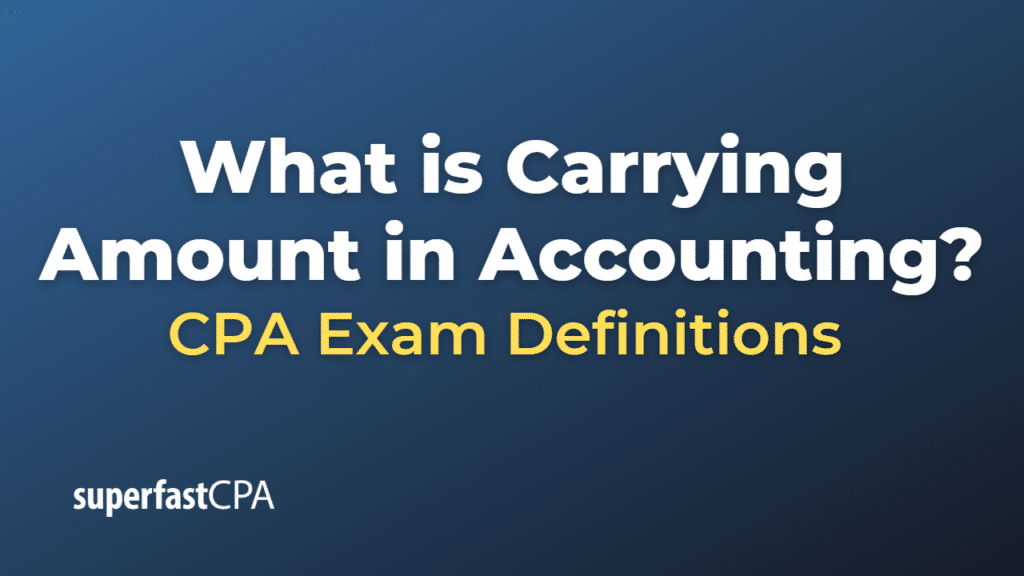Carrying Amount
In accounting, the carrying amount (also known as the carrying value or book value) refers to the value of an asset or liability as it appears on the balance sheet. The carrying amount of an asset is determined by taking the original cost of the asset and subtracting any accumulated depreciation, amortization, or impairment charges. For liabilities, the carrying amount is generally the outstanding balance or the amount still owed.
For assets, the carrying amount is calculated as follows:
Carrying Amount = Original Cost – Accumulated Depreciation (or Amortization) – Impairment Losses
The carrying amount is an important concept in accounting as it represents the net value of an asset or liability at a specific point in time. It provides an indication of the remaining value of an asset after accounting for its usage, wear and tear, or obsolescence. Similarly, it indicates the outstanding balance of a liability that a company is obligated to repay.
Carrying amounts are used in various financial analyses and ratios, such as the debt-to-equity ratio, the current ratio, and the return on assets ratio, to assess a company’s financial health, performance, and efficiency.
It’s essential to note that the carrying amount of an asset or liability may differ significantly from its fair market value. The fair market value is the price at which the asset could be bought or sold in a transaction between willing and knowledgeable parties, whereas the carrying amount is based on historical costs and accounting adjustments.
Example of a Carrying Amount
Let’s consider a fictional company, “TruckFleet Inc.,” that purchases a delivery truck for its business operations. The truck has an original cost of $50,000, and its useful life is estimated to be five years with a residual value of $10,000. The company uses the straight-line depreciation method to depreciate the truck over its useful life.
Here’s the depreciation calculation:
Annual Depreciation Expense = (Original Cost – Residual Value) / Useful Life
Annual Depreciation Expense = ($50,000 – $10,000) / 5
Annual Depreciation Expense = $8,000
At the end of the first year, the carrying amount of the truck will be:
Carrying Amount = Original Cost – Accumulated Depreciation
Carrying Amount = $50,000 – $8,000
Carrying Amount = $42,000
At the end of the second year, the accumulated depreciation will be $16,000 ($8,000 x 2), and the carrying amount of the truck will be:
Carrying Amount = Original Cost – Accumulated Depreciation
Carrying Amount = $50,000 – $16,000
Carrying Amount = $34,000
As you can see, the carrying amount of the truck declines over time as the accumulated depreciation increases due to the usage and wear and tear of the asset. The carrying amount provides an indication of the remaining net value of the truck on TruckFleet Inc.’s balance sheet after accounting for depreciation.













